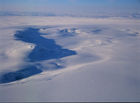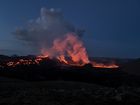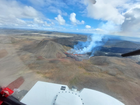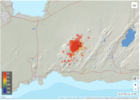News

Minor jökulhlaup in Grímsvötn
Updated 13.10.
The glacial flood from Grímsvötn is still ongoing and maximum discharge of about 500 m3/s from Grímsvötn sub-glacial lake is expected to be reached later today or tonight. The ice-shelf on top of the sub-glacial lake has now subsided approximately 12 m since 5th of October. Since yesterday morning signals of floodwater have been detected in Gígjukvísl river by water level measurements and on images from a web camera
Read more
Fagradalsfjall eruption unusual in many ways compared to other eruptions
The precursors to the eruption at Fagradalsfjall last year were unusual compared to many other eruptions across the world and the composition of the lava changed as the eruption continued. These are among the findings of two papers published in the latest issue of Nature by scientists at the University of Iceland and the Icelandic Meteorological Office along with a large number of colleagues.
Read more
„We need to control our footprint on mother Earth“
The president of Iceland, Guðni Th. Jóhannesson, opened the science symposium Cryosphere 2022 in Harpa concert hall this morning. The Icelandic Meteorological Office (IMO) is organizing the conference focusing on ice and snow in a warming world. About 330 scientists participate in the symposium from 33 countries of 6 continents.
Read more
Latest news on the eruption at Reykjanes peninsula
Updated 23.8.2022
The eruption in Meradalir, which commenced on the 3rd of August, ceased to issue lava on the 21 of August. Volcanic tremor started to decrease steadily from the 18th and stopped completely during the night of 21st. The activity at the crater ceased at the same time, with no visible extrusion of fresh lava.
Read more
Status of unrest in Reykjanes
Preliminary deformation modelling results suggest the top depth of the new dike intrusion beneath Fagradalsfjall is very shallow - about 1 km. The magma inflow rate is rapid, almost double that observed during the first dike intrusion in february-march 2021.
Read more
Status of unrest in Askja
A meeting was held with scientists from the Icelandic Met Office, Institute of Earth Science and the Department of Civil Protection and Emergency Management to follow up on the status of unrest in Askja. Since august 2021 an uplift of 35 cm centered west of the Askja lake has been measured.
Read moreEarthquakes on the Reykjanes peninsula
More than 3000 earthquakes have been automatically detected nearby Eldvörp in the Reykjanes/Svartsengi volcanic system in the past week. Since yesterday (15.05), nine earthquakes had magnitude above M3 and two above M4. The largest event had a magnitude of M4.3 occurred on 15.05 at 17:38 UTC. The seismicity is located at a depth between 4 and 6 km.
Read moreThe weather in Iceland in 2021
The weather in 2021 was mainly favorable, wind speed was below average and stormy days were relatively uncommon. The annual mean temperature was slightly above the 1991 to 2020 mean at most stations, and it was considerably dry in all parts of the country. Snow conditions were remarkably light in the Southwest during the year. The number of snow-covered days in Reykjavík were only 17 and only once been fewer. The summer was exceptionally warm, sunny, and dry in the North and East, the warmest on record in many places in these regions and many maximum temperature records were broken. The monthly mean temperature reached 14 °C at several stations this summer. It is the first time that the monthly mean temperature reaches 14°C at any station since the beginning of observations. The year was sunny in Akureyri and the total number of sunshine hours in Akureyri has only once been more.
Read more



